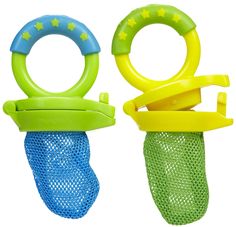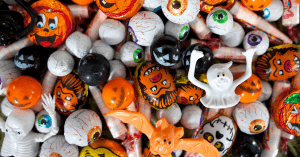Teething can be a difficult time for both babies and their caregivers. You can help a little one through the process by knowing what to expect, how to spot the telltale signs and by following helpful tips for easing discomfort.
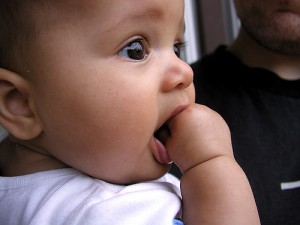
What to Expect
Since babies can’t tell us what’s going on, parents are often left wondering why their normally content baby is cranky or fussy. Knowing when to expect new teeth will help to know if teething is to blame for the discomfort.
Teething typically begins as early as 3 months with your baby’s first tooth starting to push through between 4 and 7 months old. The first teeth to appear usually are the two bottom front teeth, also known as the central incisors. They’re usually followed 4 to 8 weeks later by the four front upper teeth (central and lateral incisors). About a month later, the lower lateral incisors (the two teeth flanking the bottom front teeth) will appear. Next to break through are the first molars (the back teeth used for grinding food), then finally the eye teeth (the pointy teeth in the upper jaw). Most kids have all 20 of their primary teeth by their third birthday.
Signs to Watch For
When your baby is cutting a tooth, she may experience any or all of these symptom and sometimes none at all.
- Drooling more often than normal
- Desire to chew on things, such as your finger, a toy, blanket or clothing
- Periods of irritability or crankiness
- Crying spells
- Disrupted sleeping or eating patterns
- A slight rise in temperature due to swollen gums
According to the experts, some babies feel no discomfort at all while teething and others are quite uncomfortable throughout the process. If your baby is unusually fussy, talk to your doctor.
Tips and Toys for Easing Teething Pain
- Wipe drool to prevent skin irritation.
- Offer a cold, wet cloth for baby to chew on. While a few minutes in the freezer will make the cloth cold enough to provide some relief, freezing it too long can cause irritation to your child’s gums.
- Gently massage gums with a clean finger.
- Give baby a chilled teether, such as this one MAM that has a handle that won’t get too cold to hold.
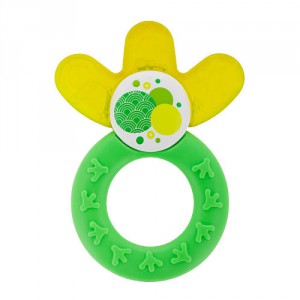
- Offer a teething necklace. Chewable necklaces and jewelry, such as Chewbeads have been popular. The latest trend in teething necklaces is Amber Beads, reportedly safe and naturally soothing for gums.
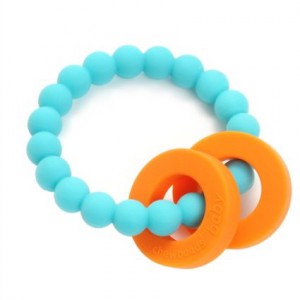
- If she’s eating solid food, offer frozen food, such as a banana or peach. Munchin Fresh Food Teether allows you to put the frozen food in an enclosed mesh bag so you don’t have to worry about your baby getting too big of a piece in her mouth.
- The famed Sophie the Giraffe. Why is this rubber toy so popular…and why pay $20 for a chew toy? Sophie is made of all-natural rubber that feels great on the gums, squeaks to keep baby entertained, and even comes in a Vanilla scent that is said to sooth.
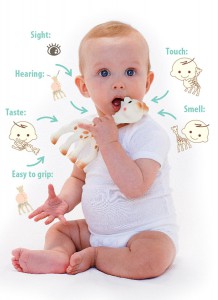
- Try more than one teething toy, as all babies are different and may find toys some more comforting than others.
- Ask your doctor about giving baby pain reliever, such as Advil or Tylenol for babies.
Teething is no fun for babies or those who care for them, but knowing what’s coming and how to ease the pain can make the process a lot easier on both of you. Make sure you tell your sitter if your child is cutting a tooth, and share these suggestions for soothing a sore mouth.
